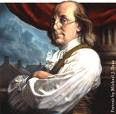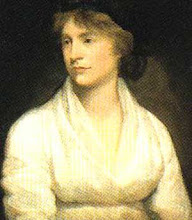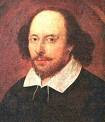 Richard D. Altick’s The Art of Literary Research states, “Almost every literary work is attended by a host of outside circumstances which, once we expose and explore them, suffuse it with additional meaning” (Dobie 15). Flannery O’Connor’s “Good Country People” is a reflection of a transformative pilgrimage and a Christian vocation.
Richard D. Altick’s The Art of Literary Research states, “Almost every literary work is attended by a host of outside circumstances which, once we expose and explore them, suffuse it with additional meaning” (Dobie 15). Flannery O’Connor’s “Good Country People” is a reflection of a transformative pilgrimage and a Christian vocation.
In 1955, in letters to Robert Giroux, Thomas Mabry, and Ben Griffith, O’Connor claims that “[Good Country People] is really a story that would set the whole collection [of her writings] on its feet […] It is the best thing I have done […] because it is one of those examples of the will and the imagination fusing and it is so rare an experience for me that I am a little unhinged by it. [The story] pleases me to no end” (Flannery 929-931).
 Through explication, the short story reveals layers of redemption and salvation and parallels various aspects that are comparable to O’Connor’s own life. These elements presented in the text, once uncovered, give Flannery O’Connor’s “Good Country People” profound spiritual meaning by way of a symbolic name and a wooden leg. Hulga, the main protagonist, represents a pilgrimage of faith and illuminates O’Connor’s established vocation in redemptive salvation.
Through explication, the short story reveals layers of redemption and salvation and parallels various aspects that are comparable to O’Connor’s own life. These elements presented in the text, once uncovered, give Flannery O’Connor’s “Good Country People” profound spiritual meaning by way of a symbolic name and a wooden leg. Hulga, the main protagonist, represents a pilgrimage of faith and illuminates O’Connor’s established vocation in redemptive salvation.
Flannery O’Connor was born and reared in the American South. She was highly educated and a devout Roman Catholic who explored the literary grotesque in her writings. According to an introduction in Literature And Its Writers, “O’Connor was uncompromising in her religious views: ‘For I am no disbeliever in spiritual purpose and no vague believer. This means that for me the meaning of life is centered in our redemption by Christ and what I see in the world I see in relation to that’” Charters 430).
Additionally, Carter Martin’s The True Country notes, “What [Flannery O’Connor] does best must be done for God” (Martin 13). At the height of her career as a writer, after receiving a Masters of Fine Arts, in the North, Flannery was stricken with lupus and forced to return home to live in the South with her mother, Regina, on a farm. The relationship was tense. Regina was rumored to have picked up Flannery’s book The Idiot and non-approvingly shook her head. Flannery often felt she was misunderstood.
In these years, Flannery used crutches to aid her in mobility. In a letter to Miss A, from Milledgeville on September 24, 1955, Flannery refers to these devices as “[her] two aluminum legs” (Flannery 958). Similarly, in the text, the narrator explains, “Joy had made it plain that if it had not been for this condition, she would be far from these red hills and good country people. She would be in a university lecturing to people who knew what she was talking about” (Flannery 268). Looking over the chronology of Flannery O’Connor’s life, one could surely make the same proclamation for her.
 Also, similar to O’Connor, Hulga, formerly known as Joy Hopewell, is a highly-educated, thirty-two year old woman with an artificial, wooden leg who lives in the American South on a farm. After earning a Doctorate in Philosophy, in the North, she is forced to return home because of a heart condition. Joy-Hulga is articulate, and her thoughts are abstract. She represents everything that her mother, Mrs. Hopewell, and the tenant farmer’s wife, Mrs. Freeman, are not.
Also, similar to O’Connor, Hulga, formerly known as Joy Hopewell, is a highly-educated, thirty-two year old woman with an artificial, wooden leg who lives in the American South on a farm. After earning a Doctorate in Philosophy, in the North, she is forced to return home because of a heart condition. Joy-Hulga is articulate, and her thoughts are abstract. She represents everything that her mother, Mrs. Hopewell, and the tenant farmer’s wife, Mrs. Freeman, are not.
Hulga is unkempt, rude, bitter, and angry. She consistently mocks her mother and Mrs. Freeman, and she perceives their faults without their realization. Mrs. Hopewell, similar to Flannery’s mother, picks up a work by Nietzsche that Hulga is reading. Afterwards, she “shut[s] the book quickly and [exits] out of the room as if she were having a chill” (Flannery 269). Hulga is unhappy and searching for acceptance. She is about to embark upon a pilgrimage. In another letter to Miss A, O’Connor refers to Hulga as a “heroine” (Flannery 958).
Flannery continues, “Hulga in this case would be a projection of myself into this kind of tragic-comic action – presumably only a projection” (Flannery 959). From the quote and multiple minute details, one can draw similarities between Flannery O’Connor and her depiction of Hulga-Joy Hopewell.
No man is an island, and no one lives an isolated existence. Everyone is a product of “biological, intellectual, emotional, and spiritual influences” (Dobie 16). “Good Country People” is a product of “a time, a place, and an individual.” Similar to Hipolyte Taine’s “race, milieu et moment,” Flannery’s work depicts a specific culture, experience, and age in the New Christian American South. For O’Connor, Hulga’s artificial leg is symbolic of a new trend, philosophy, if one will, of the “Christian haunted” South. The wooden leg represents a false sense of education and a renunciation of a faith in God.
In “Writing Short Stories”, O’Connor asserts that “in a good fiction, certain of the details will tend to accumulate meaning from the action of the story itself, and when this happens they become symbolic in the way they work” (Charters 668). O’Connor continues to explain the significance of Hulga’s wooden leg. She states:
Early in the story, we’re presented with the fact that the Ph.D. is spiritually as well as physically crippled. She believes in nothing but her own belief in nothing, and we perceive that there is a wooden part of her soul that corresponds to her wooden leg. As the story goes on, the wooden leg continues to accumulate meaning. The reader learns how the girl feels about her leg, how her mother feels about it, and how the country woman on the place feels about it; and finally, by the time the Bible salesman comes along, the leg has accumulated so much meaning that it is, as the saying goes, loaded. And when the Bible salesman steals it, the reader realizes that he has taken away part of the girl’s personality and has revealed her deeper affliction to her for the first time. (669)
O’Connor’s description of the process of writing “Good Country People” seems methodical, logical. A sense of vocation is not clearly stated until toward the end of the text. She states, “It is a story that was[…] not entirely conscious […] It is a fact that fiction writing is something in which the whole personality takes part – the conscious as well as the unconscious mind” (Charters 669). From the quote, O’Connor conveys a sense of divine inspiration, of something beyond herself. Flannery O’Connor wants to urge the reader to experience the extraordinary in redemptive salvation.
Martin’s The True Country highlights the experience further. He states, “Meaning, semantics, character, and intention are scrambled […] to provoke unthinking readers to confront the issues presented by O’Connor in her attempts to formulate language that will adequately account for human experience” (Martin viii). There was a sense of purpose in O’Connor’s fiction, and her goal was to provide guidance to redemptive salvation. Nothing was by way of chance. Miss O’Connor did not deny her Christian position in her writings; instead, she celebrated her religious faith.
To Miss O’Connor, her life was a living sacrifice of longsuffering and fellowship with God. Her faith was her work, and her work was her faith. She once stated, “All my stories are about the action of grace on a character who is not very willing to support it, but most people think of these stories as hard, hopeless and brutal” (Charters 670). O’Connor’s work cannot be separated from her practiced faith and perceived vocation, and, more importantly, she used her writings to teach her readers.
In another letter to Miss A concerning Allen Tate, from Milledgeville on August, 24, 1956, Flannery O’Connor summed up Hulga’s plight. She stated, “She is full of contempt for the Bible salesman until she finds he is full of contempt for her. Nothing “comes to flower” here except her realization in the end that she ain’t so smart […] Hulga was not a ‘maimed soul’ she was just like us all” (Flannery 999-1000). There was purpose and intention in Flannery’s writings, and “Good Country People” was exemplar of her desire for redemption and salvation, both for herself and for the reader.
Not only is Hulga’s leg symbolic, but her name holds special meaning as well. In Norwegian, Hulga is translated to mean “the holy one” (Holsen 59). Although one cannot prove that Flannery chooses the name for its Norwegian translation, one can make the hypothesis that by doing this, Flannery adds a deeper meaning to Joy’s level of intellectuality, and, in turn, she layers in a greater purpose to the story. Unlike Mrs. Hopewell’s assertion that Joy chooses the name because “she had hit upon the ugliest name in any language,” Joy makes an informed choice; furthermore, O’Connor leaves it up to the reader to research the implication in the new name (Flannery 266). To Joy, the name Hulga symbolizes the awareness that “we are all damned […,] but some of us have taken off the blindfolds and see that there is nothing to see. It’s a kind of salvation” (Flannery 280).
Flannery uses the name to evoke special meaning to the informed reader. Like in Wise Blood, Enoch, the main protagonist, can be likened to a Biblical reference. In the Book of Genesis, Enoch was a man born after the generations of men who had began to call upon the Lord. Enoch did not die rather “he walked with God; then he was no more, because God took him away” (Genesis 4:26 -5:24). No one else in the Bible can claim that history, only Enoch. One can easily assert that a devout Roman Catholic would have been aware of the significance of the name.
Given names for Flannery are not by chance. To O’Connor, names convey a special meaning for the text. According to Martin’s The True Country:
Flannery O’Connor implicitly committed herself as a writer to the Christian theme; she pursued it with persistence and devotion until her death. Any attempt at an appreciation of her work must begin with a clear understanding of this theme; regardless of one’s own religious predilections, he must know the meaning of the sacramental view of life before he can know the meaning of Flannery O’Connor’s fiction. She fuses the transcendent world with the sublunary one, achieving such a convergence of actualities that one is meaningless without the other. Martin 9)
O’Connor did not choose names randomly. Nothing can be viewed as chance. The reader must consider her faith when viewing her fiction.
Similarly, more meaning can be explicated from the text, specifically the personage of Hulga as she relates to other characters within the short story. The narrator states she has “the look of someone who has achieved blindness by an act of will and a means to keep it” (O’Connor 265). When chastised by her mother, Hulga argues, “If you want me, here I am – LIKE I AM” (O’Connor 266). Flannery uses Hulga’s depiction to convey meaning; moreover, salvation and redemption can be traced in Hulga’s plight. Specifically, her first transformative journey takes place in a private interaction with Mrs. Freeman.
The tenant’s wife serves a unique purpose. Mrs. Freeman represents the anti-Christ. The text states, “[She was attracted to] secret infections, hidden deformities, assaults upon children. Of disease, she preferred the lingering or incurable” (O’Connor 267). The narrator continues, “Mrs. Freeman would take on strange resentments […] And without warning one day, she began calling [Joy] Hulga […] The big spectacled Joy-Hulga […] scowl[ed] and redden as if her privacy had been intruded upon. She considered the name her personal affair” (O’Connor 266). From the quote, unlike Mrs. Hopewell, Mrs. Freeman is not offended by the name, instead she uses Hulga’s name as a weapon against her.
The narrator continues, “It was as if Mrs. Freeman[‘s …] eyes had penetrated far enough behind [Hulga’s] face to reach some secret fact […] then one day Hulga realized that it was the artificial leg” (O’Connor 267). Hulga realizes that she is searching for something deeper. At this moment, she becomes aware that there is something deeper within her, something new and unreachable. The epiphanous moment plays a pivotal role in Hulga’s transformative journey to redemptive salvation. Flannery O’Connor fuses these minute parts, Hulga’s perceived search and the wooden leg, to create a comprehensive and cohesive meaning for “Good Country People.”
Interactions with her mother, Mrs. Hopewell, aid Hulga’s spiritual development as well. Many parts of the text can be used to argue the point, but one passage in particular is quite relevant. Hulga’s mother asserts, “[Maybe] it would have been better if the child had not taken the Ph.D. […] It seemed to Mrs. Hopewell that every year she grew less like other people and more like herself” (Flannery 267-268).
Hulga is growing progressively toward her belief in nothingness. She is forsaking a belief in God for a belief in man by way of education. Mrs. Hopewell is keenly aware of Hulga’s transformation toward faithlessness; but she is unable to clearly articulate her observation.
Complimenting Mrs. Hopewell’s observances is another passage within the text. In a dialogue with her mother, Hulga explodes, “Woman! Do you ever look inside? Do you ever look inside and see what you are not? God! [...] Malebranche was right: we are not our own light. We are not our own light!” (Flannery 268). These quotes are instrumental to Flannery O’Connor’s theme of redemption and salvation. Most readers would immediately recognize the religious references implied.
In the Book of First John, the scripture asserts, “God is light; in Him there is no darkness at all […] If we walk in the light, as he is in the light, we have fellowship with one another” (I John 1:5, 7). An even greater probability of reference is the Biblical scripture from the Book of Matthew. The passage states, “Let your light shine before men, that they may see your good deeds and praise your Father in heaven” (Matthew 5:16). Hulga is seeking light and direction through her education, not God.
Hulga is aimless, groundless. She is searching for nothingness. Calling attention to redemptive salvation, O’Connor’s goal is to highlight a new phenomenon in the educated South. O’Connor is making Biblical references through Hulga’s atheist means. The story is gaining more and more meaning. Hulga’s wooden leg is becoming more and more symbolic of something that is greater than physical, something that is deeply spiritual.
In an essay “The Regional Writer,” O’Connor states:
The present state of the South is one wherein nothing can be taken for granted, one in which our identity is obscured and in doubt […] Being Southern [will be] relatively meaningless, and that soon there is going to be precious little difference in the end product whether you are a writer from Georgia, or a writer from Hollywood, California [...] It is not made from the mean average or the typical, but from the hidden and often the most extreme. It is not made from what passes, but from those qualities that endure, regardless of what passes, because they are related to truth. It lies very deep. In its entirety, it is known only to God, but of those who look for it, none gets so close as the artist. (Flannery 846-847)
Flannery O’Connor addresses her concerns through the character of Hulga. Joy-Hulga’s "miseducation" is the problem in the new South. Old ideas are slowly being replaced and marginalized. New ideas are seen as a pathway to nothingness, commonality. Local color is fading, and values and principles are losing ground. In this way, O’Connor constructs many intricate layers of meaning in “Good Country People,” and readers must actively look for the messages.
Finally, along comes Manley Pointer to create the most important pivotal moment in Hulga’s spiritual awareness. Mrs. Freeman refers to him as “good country people [who] are the salt of the earth!” (Flannery 271). Again, O’Connor is interjecting another Biblical reference. Most readers would recall the text in the Book of Matthew, “You are the salt of the earth. But if the salt loses its saltiness, how can it be made salty again? It is no longer good for anything, except to be thrown out and trampled by men.” (Matthew 5:13). Flannery O’Connor uses these scriptural texts to create a comprehensive and meaningful theme for the short story. This is the epitome of vocation.
O’Connor uses Pointer as a means of shock therapy for Hulga. Through him, she becomes aware of her life on spiritual and physically levels. Initially, Hulga believes, “True genius can get an idea across even to an inferior mind. She imagined that she took his remorse in hand and changed it into a deeper understanding of life. She took all his shame away and turned it into something useful” (Flannery 276). Similar to John Milton’s Paradise Lost where Eve is tricked by the subtlety of Satan posing a serpent, Hulga falls prey to Manley Pointer.
She underestimates his intelligence, and simultaneously overestimates her own sense of reason. Hulga appoints Manley in the role of a protégé; instead, he becomes her nemesis. Manley Pointer is dangerous. Like Eve desiring the wisdom of God, Hulga desires to shape a human soul, and she believes that she can impart truth. She openly admits that she “don’t believe in God” (Flannery 277). From the dialogue, Hulga is arrogant, prideful. She asserts she “don’t have illusions. I’m one of those people who see through to nothing” (Flannery 280).
 Soon redemptive salvation creeps in, like in the beginning; it ends with the wooden leg. When pressed by Pointer to remove the leg, the narrator states, “She was as sensitive about the artificial leg as a peacock about his tail. No one ever touched it but her. She took care of it as someone else would his soul, in private and almost with her own eyes turned away” (Flannery 281). Pointer progressively pushes Hulga to her outer limits until she is off guard and out of control.
Soon redemptive salvation creeps in, like in the beginning; it ends with the wooden leg. When pressed by Pointer to remove the leg, the narrator states, “She was as sensitive about the artificial leg as a peacock about his tail. No one ever touched it but her. She took care of it as someone else would his soul, in private and almost with her own eyes turned away” (Flannery 281). Pointer progressively pushes Hulga to her outer limits until she is off guard and out of control.
The narrator describes her mental state, “She decided that for the first time in her life she was face to face with real innocence [...] with an instinct that came from beyond wisdom, had touched the truth about her […] It was like surrendering to him completely. It was like losing her own life and finding it again […] in his […] Without the leg she felt entirely dependent upon him” (Flannery 281-282). Flannery O’Connor chose these words expertly.
Again, another Biblical reference is made. In the Book of Matthew, a scripture states, “Whoever finds his life will lose it, and whoever loses his life for my sake will find it” (Matthew 10:39) Hulga mistakenly places her salvation in the hands of man, education, autonomy, free-will, and selfhood. She does not seek divine intervention or guidance. She is living by nothingness, with nothingness, and through nothingness. She is a lost, wretched soul who is taking the final steps towards an inward reflection that leads to redemptive salvation.
The last words in the dialogue between Manley and Hulga are pivotal, critical, and chilling. Pointer states, “I know where I’m going […] You ain’t so smart. I been believing in nothing ever since I was born!” (283). From the quote, Pointer is evil incarnate. Manley’s words are a direct assault on everything, completely everything, that Hulga has believed.
Apparently, she did not know where she was going, and the seduction fails. Assumingly, she is not that brilliant mind imparting knowledge to an inferior one. She is being left virtually blind and unable to walk. Also, the fact that she believes in nothing is not a rare or elite stance. Manley Pointer does not need an education to make the same claim. Weighing everything, the audience realizes she has been usurped by him, and her superior intelligence, reason, and faithlessness leave her obviously trapped, virtually blind, and seemingly helpless.
In the end, the fixity of the “Negroes” is used to quantify the Other and highlight Homi Bhabha’s process of stereotyping (Andermahr 80). Ironically, the reader realizes that Mrs. Freeman and Mrs. Hopewell, while picking evil-smelling onions, are the real “Others.” While the blind, one-legged Hulga remains trapped in an old barn in the back fields of the farm experiencing a keen awareness of her circumstances, both Mrs. Freeman and Mrs. Hopewell are lost in a blindness that is more profound than Hulga’s. With one exception, they will likely never see light, salvation, or truth.
Flannery O’Connor “acknowledg[es] that there is usually more than one way to read a story, she also state[s] that there was only one way she could possibly have written [a story]” (Charters 663). From Flannery O’Connor’s eyes and perceived vocation and through pain, loss, and utter devastation, it is Hulga, alone, who has the potential for redemption and salvation in “Good Country People.”












